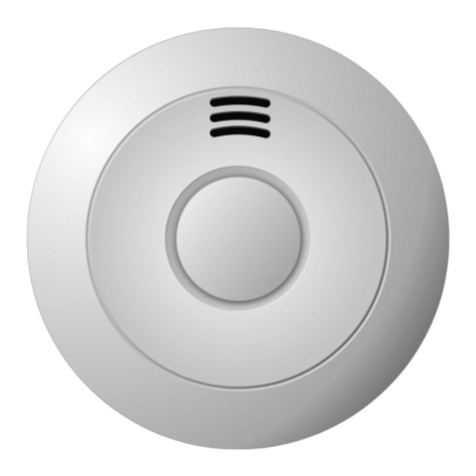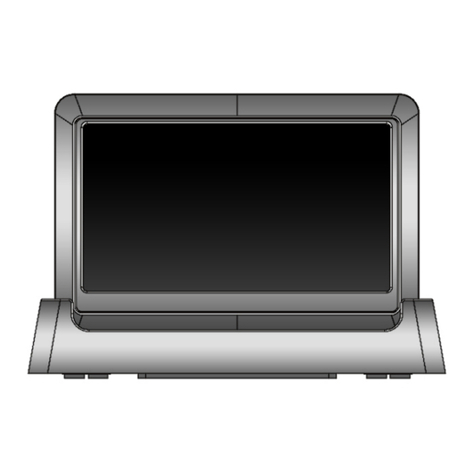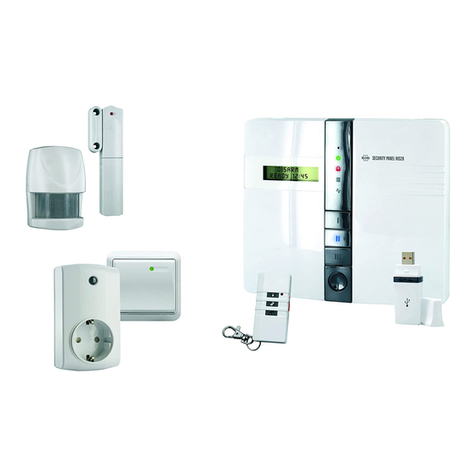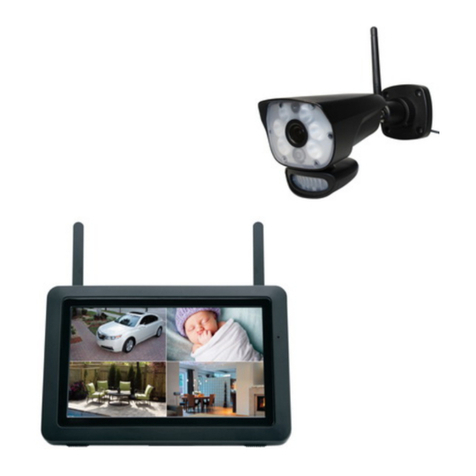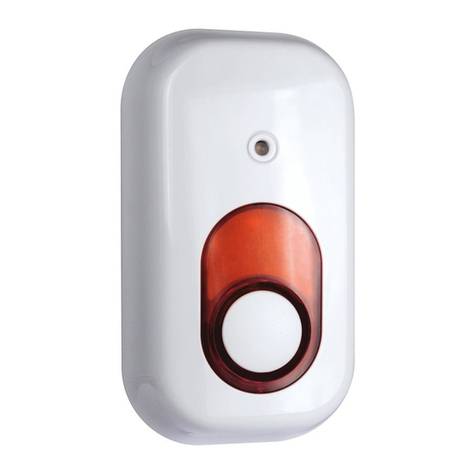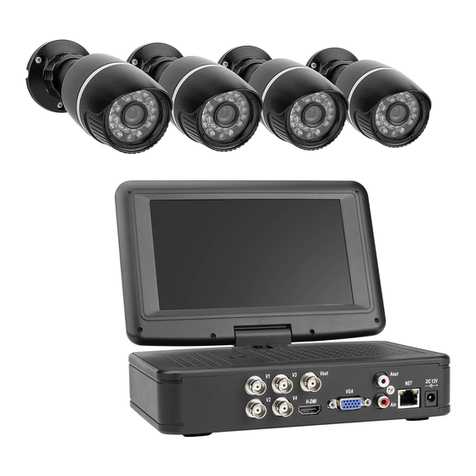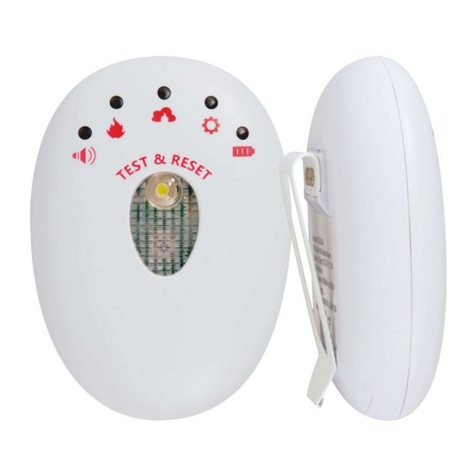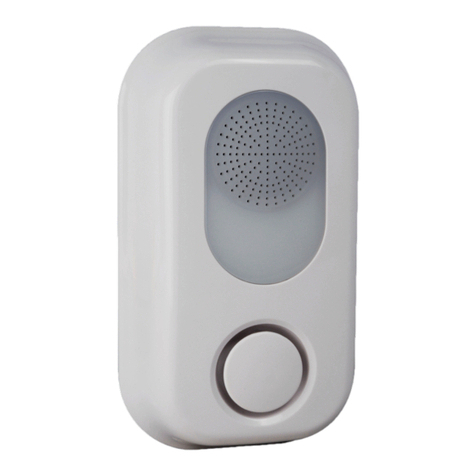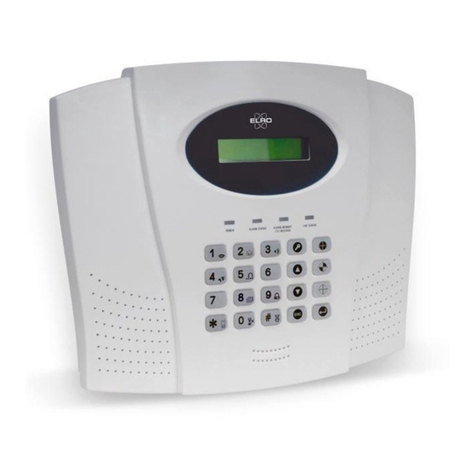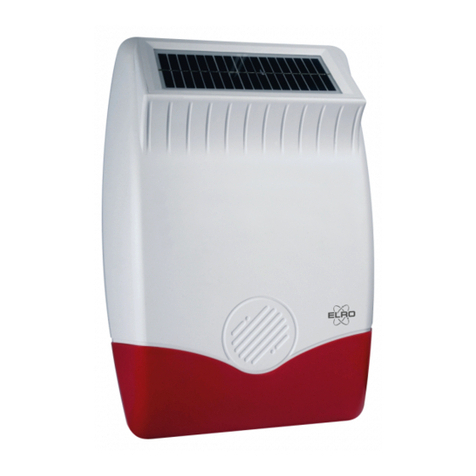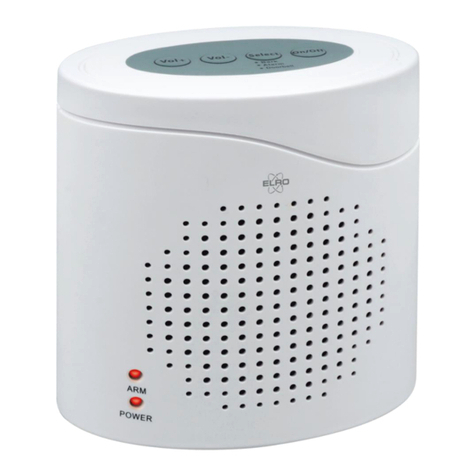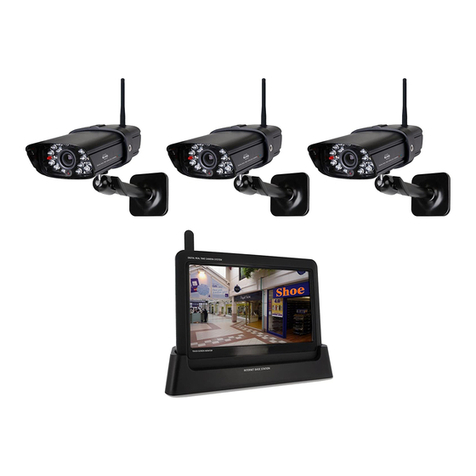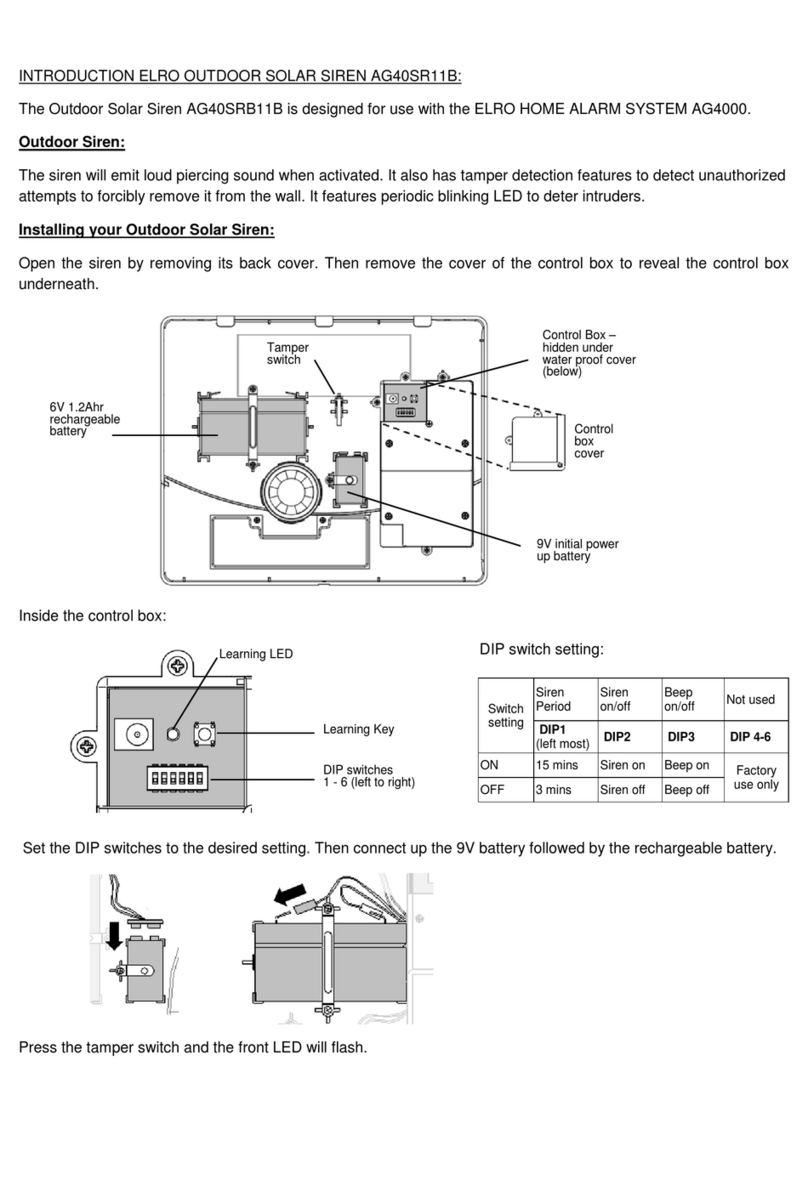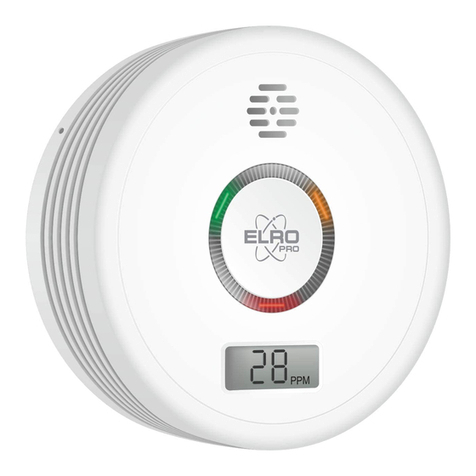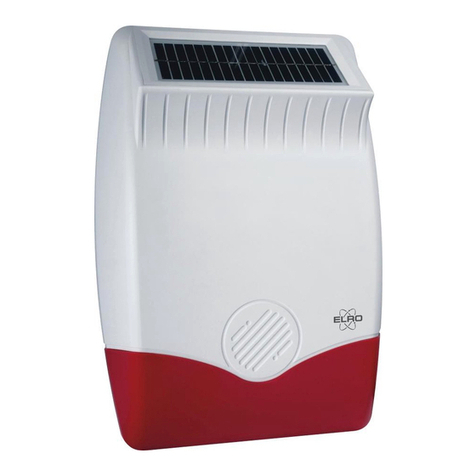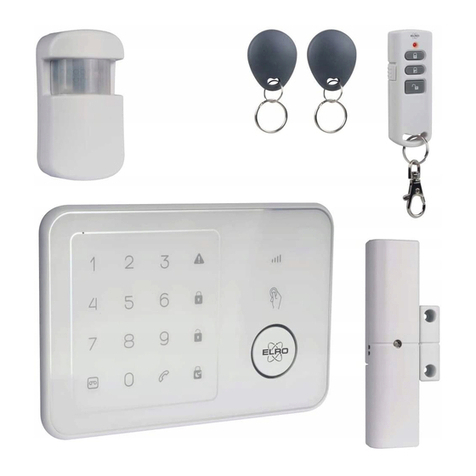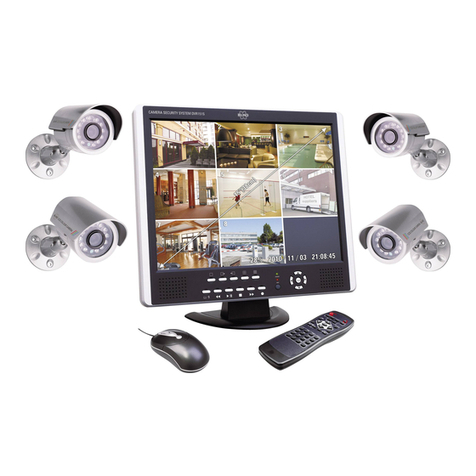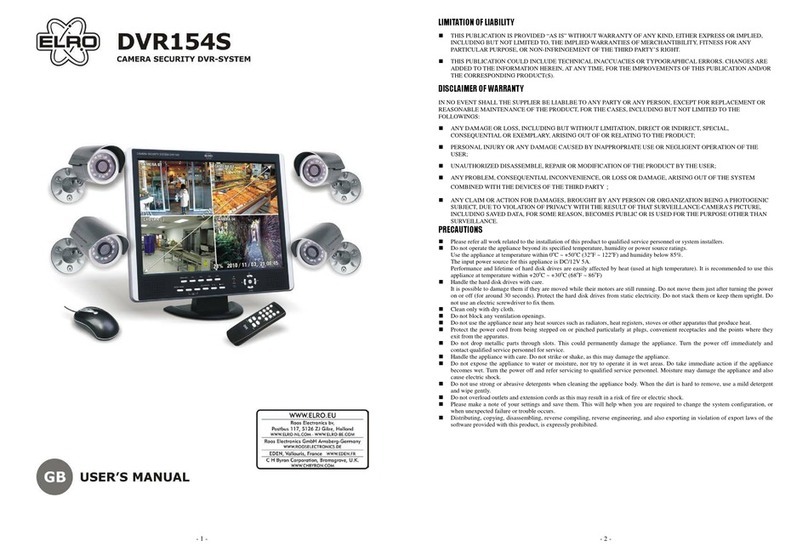5 / 7
5. Baery installaon/replacement:
Once chirps with corresponding FAULT indicator (yellow
LED) flashing once every 40 seconds indicates that the
battery is
low battery, you must to replace with battery specified, please
see
“8. Specification”
To install or replace the battery in unit, please perform the
following steps:
5.1 Remove the device from the wall.
5.2 Remove the old battery and replace it with a new one.
5.3 Put the battery into the battery box.
5.4 Install the alarm back to the bracket.
5.5 Use the TEST/SILENCE button to test the alarm. If the
test alarm is normal, it means that the device can work
normally.
WARNING! - Use only the baery specied. Use of dierent baery may
have a detrimental eect on the CO alarm. A good safety measure is to
replace the baery at least once a year.
NOTE: Constant exposure to high or low humidity or temperatures
may reduce baery life.
CAUTION: Please replace new 2pcs same type baeries in the
meanme.
CAUTION: Test the alarm for correct operaon using the
TEST/SILENCE buon, whenever the baery is replaced!
6. General maintenance:
To keep your CO alarm in good working order, please follow
these simple steps:
6.1 Verify the unit's alarm sound and indicators operation by
enable the TEST/SILENCE button once a week.
6.2 Remove the unit from the wall and clean the alarm cover
and vents with a soft brush attachment once a month to
remove dust and dirt.
6.3 Never use detergents or other solvents to clean the unit.
6.4 Avoid spraying air fresheners, hair spray, or other aerosols
near the CO alarm.
6.5 Do not paint the unit. Paint will seal the vents and
interfere with the sensor's ability to detect CO. Never
attempt to disassemble the unit or clean inside. This action
will void your warranty.
6.6 As soon as possible, place the CO alarm back in its proper
location to assure continuous protection from carbon
monoxide poisoning.
6.7 When household cleaning supplies or similar
contaminants are used, the area should be ventilated.
6.8 A list of materials that may be expected to be found in
recreational vehicles that may produce vapours or gases,
e.g.
oils, cleaning fluids, polishes, paints, greases, cooking
operations, etc. which may affect the reliability of the
apparatus in the short or long term.
WARNING! - The following substances can aect the sensor and may
cause false acons: methane, propane, isobutene, isopropanol,
ethylene, benzene, toluene, ethyl acetate, hydrogen sulde, sulfur
dioxides, alcohol based products, paints, thinner, solvents,
adhesives, hair sprays, aer shaves ,perfumes and some cleaning
agents.
WARNING! - Your CO alarm will not be operaonal and will not
monitor for CO levels without baery.
WARNING! - This apparatus is designed to protect individuals from
the acute eects of carbon monoxide exposure. It will not fully
safeguard individuals with specic medical condions. If in
doubt consult a medical praconer.
7. Carbon monoxide (CO) overview:
7.1 Toxic eects
Carbon monoxide (CO) is a colourless, odourless,
nonirritating gas classified as a chemical asphyxiant and
whose toxic action is a direct result of the hypoxia produced
by a given exposure.
CO is rapidly absorbed through the lungs, diffuses across
the alveolar capillary membrane and is reversibly bound with
haemoglobin as carboxyhaemoglobin (COHb), however, a
minute amount is present in the plasma. The affinity of
haemoglobin for CO is over 200 times its affinity for oxygen.
This reduces the oxygen carrying capacity of the blood, and
has an effect on the dissociation of oxyhaemoglobin, which
further reduces the oxygen supply to the tissues. CO is
chemically unchanged in the body, and is eliminated in
expired air. The elimination is determined by the same factors
that applied during absorption. The half-life while breathing
room air is 2 h - 6,5 h depending on the initial COHb level.
If the CO level in the inhaled air is constant, the level of
COHb in the blood will approach an equilibrium (saturation)
state after several hours. However, the rate at which the
equilibrium is reached depends on many factors, e.g. lung
ventilation rate (physical activity) and alveolar capillary
transfer, cardiac parameters, blood haemoglobin
concentration, barometric pressure, oxygen and carbon
dioxide concentration in the inhaled air, but the two most
important factors in determining the COHb level are the CO
concentration and the duration of exposure.
The effects of different saturation blood COHb levels on
healthy adults are shown in Table 7.1.
Table 7.1 – Health eects of COHb blood levels on healthy adults
